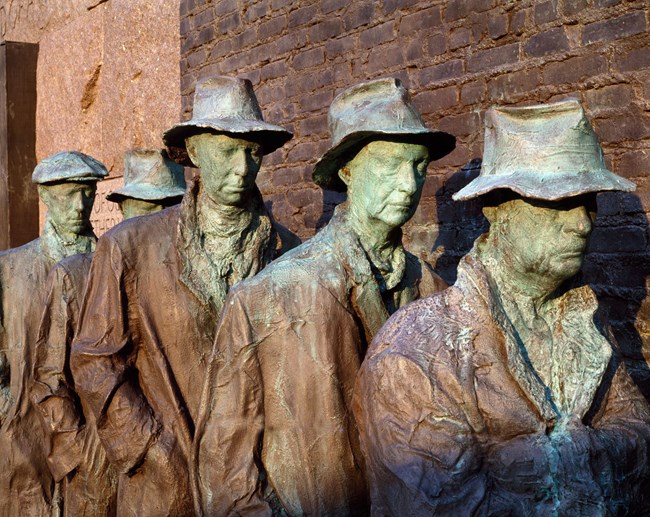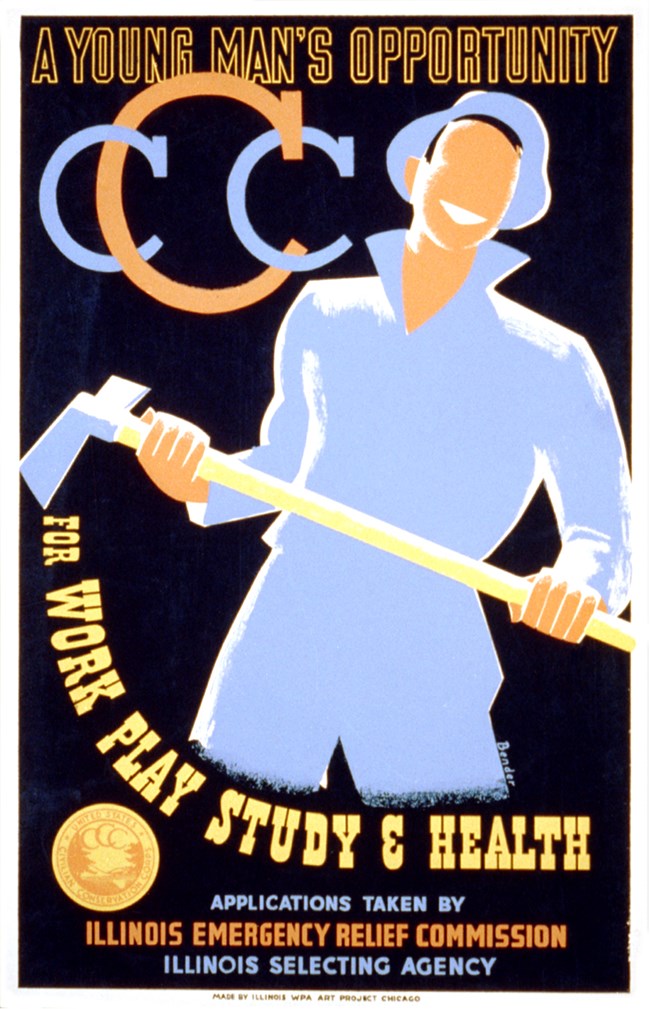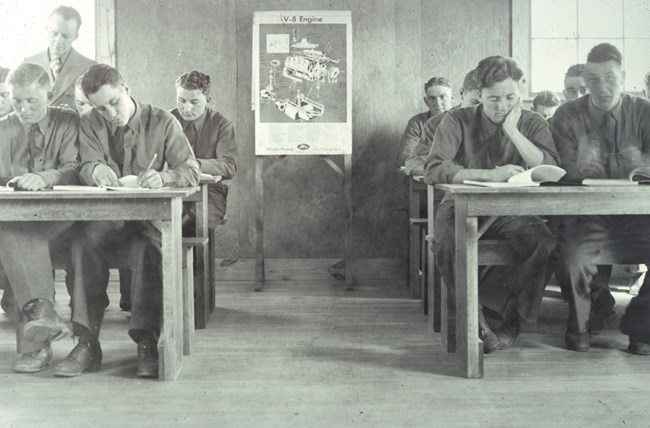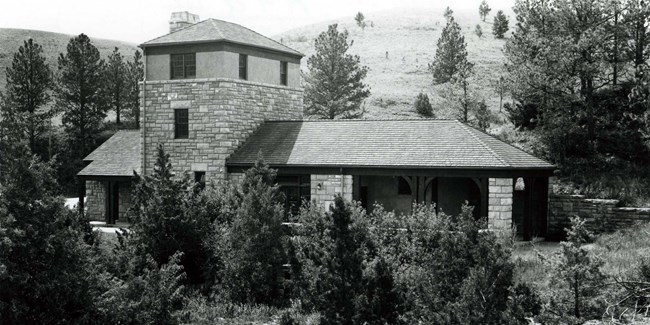
NPS Photo From Wind Cave’s creation in 1903 to today, the park has made many improvements to its facilities and roads. Many of the founding projects to enhance the parks facilities were established during the 1930s when the park housed a Civilian Conservation Corps (CCC) camp. The men stationed at the camp participated in projects to construct park buildings, tour paths, roads, and many other important facilities that we continue to utilize today.
Visit our keyboard shortcuts docs for details
(Video Caption: A brief history of the Civilian Conservation Corps lasting impact on Wind Cave National Park) 
NPS Photo / Franklin Delano Roosevelt Memorial Depressing DaysDuring the late 1920s to late 1930s, the United States faced economic hardship that became known as the Great Depression. In 1929, the stock market crashed. Unemployment began to rapidly rise, people lost their homes and couldn’t provide for families, and farmer’s crops failed due to drought leading to the Dust Bowl. The outlook for the American people was bleak. It was in this desperate time that the government attempted to find ways of helping and relieving the people. In 1933, Franklin D. Roosevelt was elected president. During his time in office, he signed off on a legislative program collectively called the New Deal, which called for immediate economic relief, as well as reforms in industry, agriculture, finance, labor, and housing. 
Library of Congress Forming New OpportunitiesOn March 31, 1933, only three weeks after Franklin D. Roosevelt’s inauguration, he created the Civilian Conservation Corps (CCC). It was an opportunity to help young men find work during the Great Depression. The plan was to put unemployed young men between the ages of 18 and 25 to work in parks, forests, and rangelands. Their enrollment period was 6 months, but could be extended to up to four years. Rather than establishing a new division, Roosevelt used existing departments to run the program. The Army ran the camps, the Department of Labor recruited the enrollees, and the Departments of the Interior and Agriculture planned the work and gave on-site supervision. The enrollees were paid $30.00 per month, or $1.00 per day plus room and board. $22.50 to $25.00 of their pay was sent home to their families. The wages were low, but the program was designed to get the unemployed young men off the streets and into productive work. These young men were recruited from around the country and formed camps in multiple states, including South Dakota. 
NPS Photo Camp LifeA Civilian Conservation Corps (CCC) camp was organized and established at Wind Cave National Park in 1934. Generally, the enrollees had to build the camp in which they were going to live. The construction of the camp started August 2, 1934, and was completed October 6, 1934. The camp became a regular operating camp by 1935. The men lived in the same area that they worked, so they organized gatherings and activities that they participated in during their free time. The camp had an education department where the enrollees could take academic or vocational classes. Through the music classes, the Wind Cave Quartet was organized. This singing group became well known through the Hills. The camp also had a variety of sports teams. The baseball team won the South Dakota CCC Championship in the years 1935 and 1936. In addition to these activities, the group of enrollees worked on numerous projects throughout the park. 
NPS Photo Building a FoundationThe main focus of the Civilian Conservation Corps (CCC) at Wind Cave was to help with projects concerning the conservation of natural resources and the construction of park facilities. The projects assigned to the enrollees provided excellent training opportunities. Inside the cave they helped sink a 208-foot elevator shaft, installed concrete steps, an indirect lighting system, repaired the cave trail, and began a cave survey. They also built a walk-in entrance near the Natural Entrance of the cave for tours. On the surface, they sloped banks for park roads, built a fence around the park to contain the wildlife, built fire trails, dug and constructed concrete reservoirs, erected or remodeled park buildings, landscaped the headquarters area and occasionally fought forest fires. During their time at the park, they also assisted in removing interior fences that were once part of the game preserve, providing more space for wildlife to roam. Many of the buildings, walls, trails, and roads you see today are remnants of Civilian Conservation Corps (CCC) projects. |
Last updated: September 4, 2023
